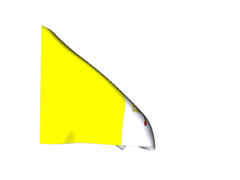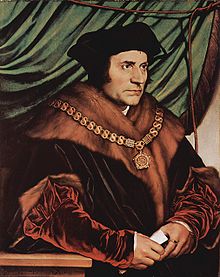The Hidden God
(Can’t make Vimeo embedding work, so please click the link below)
“Darwin’s Doubt” with Stephen Meyer from Socrates in the City on Vimeo.
——————————-
Some days ago I posted a blog post about the absurdity of atheism, based on the examples of the mechanical watch and the starry sky. On that occasion, a commenter was kind enough to post a link to a presentation of “Intelligent Design”, a scientific (as in: scientific) refutation of the Theory of Evolution as commonly intended. It is not, mind, that the Theory of Evolution is not compatible, unless it becomes Darwinism, with Catholicism (I have written on this in the past); rather, the issue here is that in the light of the advancements in microbiology of the last decades, and particularly of the last couple of decades, the Theory of Evolution is becoming simply untenable even as a perfectly Catholic explanation of how God might have chosen to proceed in His creative work.
The video is very relevant to us for the following reasons:
1) Whilst the Theory of Evolution can degenerate into Darwinism, Intelligent Design is inescapably linked to a Creator. Basically, it leaves Atheists simply nowhere to hide.
2) It provides an extremely fascinating insight into the world of microbiology, opening horizons of wonderment at God’s work in the tiniest little thing of which I and, I am sure, many others were largely unaware. The progress in Microbiology shows that even the smallest particles, like bacteria, have a degree of complexity infinitely vaster than what was supposed only a few years ago. And it also shows that this complexity cannot have “evolved” from lesser complexity more than an aeroplane without wings could fly. Some of the examples (like the DNA, and the microorganisms mentioned) will blow your mind.
3) It makes clear that we have been dished at school knowledge that was clearly obsolete and untenable even at the time; and I cannot avoid thinking that this was done largely not for the sake of “simplification”, but of indoctrination. Indoctrination which failed with believers, but certainly made it more difficult for many, deprived of Christian education, to seriously confront the question of God’s existence. Not excusing, of course. Merely stating a fact.
4) It makes clear that the theory of Evolution fails to persuade when the same scientific principles used by Darwin are applied to it. And it also makes clear that the obstacles Darwin himself saw to the functioning of his theory have not been eliminated by archaeological research – as he hoped – but have been, actually, greatly increased.
5) Finally, the main obstacle of the theory of evolution is also touched: from less cannot evolve more, from less sophistication does not evolve something new and more sophisticated, that wasn’t there before and suddenly appears. Mutation cannot explain Creation. We have no scientific evidence at all, after 150 years, that DNA can create from itself new and more evolved forms of itself, adding out of thin air something that was just not there. Rather, we know that this DNA is so astonishingly complex that it, itself, cannot have “evolved” from anything “less complex”, which the scientific observation of now around 60 years of the working of the DNA also shows.
——–
In short, the video explains in a very humorous and entertaining way that the immense complexity we see above our heads on a summer night is also present, in the most wondrous ways, in the tiniest particles like, say, bacteria, and in the very DNA of even extremely small, and supposedly very simple, forms of life.
Mind, I knew already some of this, though not from school material. I knew, for example, that the human hair and the human skin have a degree of sophistication (the lightness and robustness, or the self-healing qualities) that vastly exceed what modern technology can produce. But you see: I can see and touch my skin and my hair, and so I can relate to that in a visual, sensory way. But to discover the astonishing, astonishing complexity of a microbe, which I was always told is an extremely simple form of life, is a completely new ballgame.
You can do worse than listen to the video. The time you devote you it will be amply rewarded with fascinating insights into God’s wonderful work. It is instructing as it is edifying. And it goes head on against the secular and materialistic thinking of our age, which is the icing on the cake.
M
Posted on February 4, 2015, in Catholicism, Conservative Catholicism, Traditional Catholicism. Bookmark the permalink. 3 Comments.




















Here is a good and beautifully presented video on intelligent design that perhaps you have seen: http://www.amazon.com/The-Intelligent-Design-Collection-Privileged/dp/B0041ETK2A
Dear M,
We share your enthusiasm, having also seen this video recently and being blown away by the description of the bacterial “motor” as well as Stephen’s descriptions of the genetic coding imbedded in these tiny bits of creation. Not only are there instructions for building design, but a special separate code for “overseeing” the whole operation and functioning. How anyone could learn of this and not believe in God, is beyond us, although he did mention the ABG (Anything But God) scientists-with a chuckle.
We found this short description of it online. Just reading this is jaw-dropping:
-The bacterial flagellar motor is a complex biological molecular motor which is situated in the cell envelopes of bacteria and consists of a rotor which rotates against stator units that are anchored to the peptidoglycan cell wall.
-The rotation is driven by a flow of charged ions across the bacterial plasma membrane. It powers the rotation of helical flagellar filaments at speeds of up to several hundred hertz. These filaments act like propellers, pushing the cells through their environment, and are regulated by one of a biological signalling chemotaxis pathway, which changes the swimming pattern of the bacteria in response to changes in the concentration of external chemicals so that they move into environments, which are optimal for their growth.
-The motor itself can respond to changing conditions by adapting parts of its structure.
-Torque is generated by the interaction of the stator units, MotA and MotB (or PomA and PomB for Na+‐driven motors), with FliG in the rotor.
-Despite the fact that the driving ions always flow in one direction through the stator units, many flagellar motors can switch between clockwise and counterclockwise rotation.
-The structure of the flagellar motor is highly dynamic, some of its components undergo rapid turnover while the motor is functioning in response to changing conditions.”
Dear M,
A most informative talk. Thank you for bringing it to my notice.